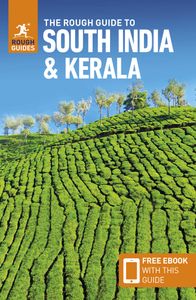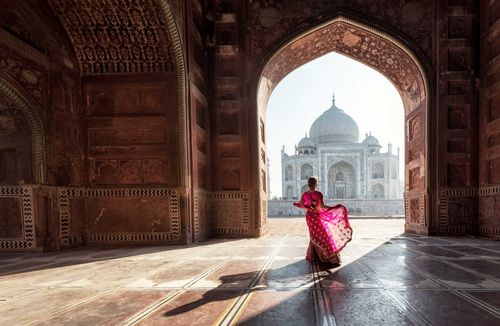Culture in Arunachal Pradesh
The culture in Arunachal Pradesh is fascinating and the more you learn the more you want to know. Tribal culture is huge here, with over 26 major tribes and further sub-tribes that date back to the beginning of mankind as we know it. Many still follow the Donyi-Polo religion, an ancient belief that pre-dates Buddhism. Its followers see the sun as female energy and the moon as male energy and involves animal sacrifices to appease the Gods. Arunachal Pradesh being diverse in indigenous tribes is also diverse in linguistics, with over 50 different dialects.
Arunachal Pradesh’s tribal groups
Arunachal Pradesh is stunningly diverse, with 26 major tribal groups, each with its own culture, dialect, dress, social structure and traditions. Polygamy remains common among many of them, as does the religious blend of Hindu, Buddhist and animist beliefs. The main ethnic groups include Monpas, Sherdukpens, Apatani, Wanchos, Noctes, Tangsas, Singphos, Khamptis, Mishmis, Mijis, Galos, Padams, Miwongs, Tagins and Puroiks. However, within all the groups, tradition is slowly giving way to modern influences, particularly among the younger generation, who increasingly wear Western clothes, watch Bollywood flicks and eat Chinese food.
Itanagar
Just under 400km northeast of Guwahati, Itanagar, the state’s quiet capital, is of little interest but an important transport hub for anyone heading to the central plateau. You may find you need to spend a night or two here organizing permits and logistics. Surrounded by low, wooded hills, the town spreads along a 4km stretch of road running between Zero Point, where the better hotels are located, and Ganga Market, the animated main bazaar, which has cheaper accommodation and the bus station. Six kilometres west of town, Gyakar Sinyi (Ganga Lake), cupped in a jungle hollow, is a popular picnic spot.
Central and East Arunachal
Pristine forests mark the watersheds of the Siang, Dibang and Lohit rivers – an unspoilt wilderness gradually opening up to visitors in search of exploration and adventure. The town of Ziro (Hapoli) makes a good base for exploring this land of rainclouds, forests, swirling paddy terraces and the fascinating Apatani villages where animist beliefs and the worship of Donyi-Polo (sun and moon) are still very much alive. The Apatanis are just one of the many tribes inhabiting these remote forests and hills of Central Arunachal. Beyond Ziro, the fragile highway etches through forested hills to the settlement of Along. Further south, the River Siang, battling through the jungles, merges into the mighty Brahmaputra at Pasighat, close to the urban centres of Upper Assam. Further east, the remote valleys of the Dibang and Lohit rivers, inhabited by the Mishmi, Singpho and Khampti tribes, descend from snow-covered passes through subtropical forests where, in the far east corner of the state, the pristine Namdapha National Park harbours a huge variety of fauna and flora.
Namdapha National Park
The beautifully remote Namdapha National Park, covering an area of 1985 square kilometres, is unique for its massive range of altitudes (200–4500m) and its huge biodiversity Close to the Burmese border, Namdapha is home to tigers, leopards (clouded and snow), elephants, red pandas, deer and the endangered Hoolock gibbon, although you are unlikely to spot any big wildlife on a short visit.
West Arunachal
Bordered by Bhutan and Tibet, the isolated hills and valleys of West Arunachal climb to some of the remotest glaciers and peaks in the Himalayas. Most of the 6000m-plus mountains – except Gori Chen (6488m) and Nyegi Kangsang (7047m) – remain completely unknown. The main road, the best in the state, runs from Bhalukpong on the Assamese border to near the Tibet frontier at Tawang, ending high in the mountains at one of Asia’s largest monasteries. On this spectacular journey you rise from the steamy foothills to the high market town of Bomdila with its Buddhist monasteries and occasional yak; further on lies Dirang, an ancient fortress town, before the climb up through the Sela Pass to Tawang.
Tawang
Some 180km northwest of Bomdila, the great Buddhist monastery of Tawang, the largest in India, dominates the land of the Monpas. Perched at around 3500m and looking out onto a semicircle of peaks that are snow-capped for much of the year, the monastery teeters on the edge of Tibet and peers down to Bhutan. This feels like the end of the road, with long cold nights and plenty of snow in winter.
A bone of contention between India and China, Tawang has always been of special significance to Tibetans and the Dalai Lama who fled Tibet in 1959 and travelled surreptitiously through here on his way into exile. His pre-incarnation, the Sixth Dalai Lama, was born on the outskirts of the town.


_listing_1448379939234.jpeg)



















